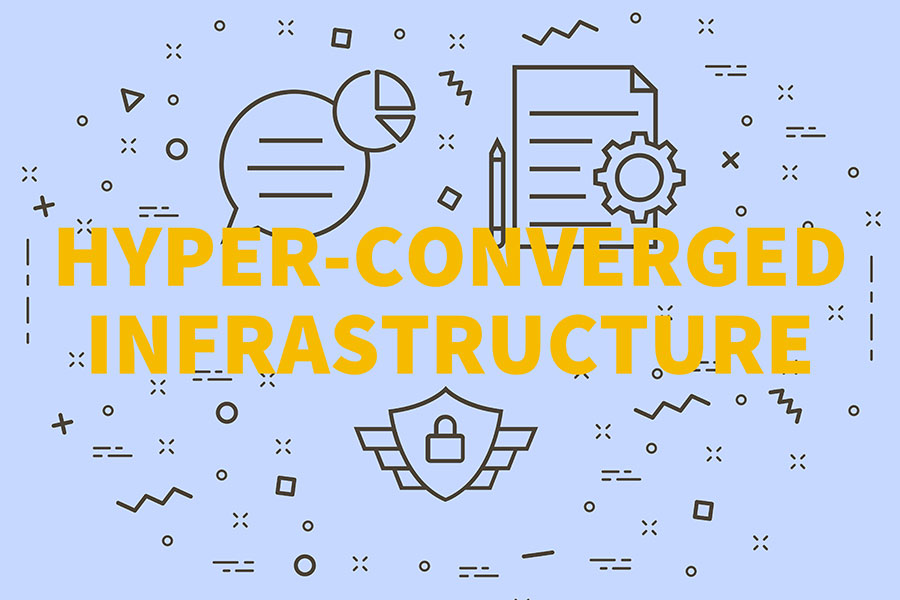Before the large steel and iron production company Charter Manufacturing moved its data center to a new corporate headquarters building a few years ago, it took a fresh look at its IT infrastructure. Ultimately, the company moved from its highly virtualized blade servers to a more modern, hyperconverged infrastructure (HCI) in a wholesale fashion.
HCI integrates compute, storage, networking, virtualization, and management software into a single enclosure. It consolidates IT infrastructure and makes it easier to manage and scale to meet changing needs.
That did the trick for Charter, according to an analysis by Principled Technologies. The move to HCI improved disaster recovery and provided greater workload mobility and reliability. It even automated many critical tasks. Charter’s IT infrastructure director estimates the time spent managing the new HCI-based data center is about one-tenth of what his five-person team spent on the legacy infrastructure.

HCI is helping companies modernize their infrastructure and gain the agility benefits similar to public cloud services. It’s helping companies increase IT speed, efficiency, scale and cost-effectiveness and supports digital transformation efforts, according to a report by Enterprise Strategy Group (ESG).
Winning Many Converts
“From education and retail to manufacturing, all industries are recognizing the value of HCI,” said Mike Leone, senior analyst with ESG and one of the authors of the report.
Indeed, just about every company is using it, according to the Nutanix 2018 Enterprise Cloud Index survey of 2,300 global IT decision makers. More than 95% of respondents indicated they employed HCI.
“While HCI adoption is on the rise, most organizations have had it in their environments for less than two years,” Leone said.
“There is a typical approach that organizations take to deploying HCI. Most start small and grow over time,” Leone said.
The annual growth of HCI ranges from 20 to about 40%, according to a variety of industry analyst reports. IDC expects the HCI market to grow more than 26% year over year for the next five years.
By 2023, HCI’s share of on-premises workloads is expected to grow from 20% today to 40%, primarily by cannibalizing three-tier infrastructures, according to Gartner report 2019 Strategic Roadmap for Storage published in May 2019.
Starting Small
That’s exactly what Charter did. It first adopted HCI as a replacement for aging servers in a remote facility that supported some 250 users, selecting a small Nutanix Enterprise Cloud cluster. That served as a proof of concept showing HCI delivered a number of benefits, according to the Principled Technologies analysis.
For one, the cluster was easy to maintain and manage, which brought cost savings. It was also flexible and able to support a range of hypervisors, which enabled IT teams to choose the one that best fit each workload. Additionally, the setup delivered robust storage performance and efficiency, with a bevy of features and integrations that reduced the need for Charter to use additional software tools.

The experience with the HCI cluster at the remote site made Charter comfortable with replacing its data center blade server infrastructure when the time came to move to its new data center.
ESG research indicates the more completely organizations embrace converged infrastructure, the bigger benefit they receive. For example, organizations that support more than 50% of their workloads with converged technology report an average 52% reduction in time spent on infrastructure deployment, vs. a 30% average reduction for lighter users.
AI Boost
Part of that benefit comes from the advanced tools built in to HCI solutions, Leone said. Some have artificial intelligence (AI) engines that provide advanced management, monitoring and alerting, he said. AI also plays a role in hybrid cloud environments, which is key to modernizing IT.
“The cloud is a great way to increase IT agility and quickly meet scalability demands. And with HCI able to deliver that similar experience on premises, it’s enabling organizations to embrace a cloud operating model with as-a-service offerings on-premises,” Leone said.
“AI is primarily being used to help with IT process automation by serving as a recommendation engine based on real-time and historical analyses to yield predictive insights on future outcomes.”
In a hybrid cloud environment, AI tools can determine whether an application should move to a public cloud or run on-premises, in the private HCI-based cloud infrastructure.
Spending to Increase
“From an infrastructure standpoint, 2019 is shaping up to be the year of HCI,” Leone predicted. An ESG spending study supports that contention, showing that 55% of the 180 respondents expect spending on HCI will increase in 2019, with another 39% expecting to spend the same as in 2018.
“It takes some time to gain confidence in HCI to support multiple workloads, never mind mission-critical workloads,” Leone said. “Organizations feel more comfortable starting with tier 2 workloads like VDI [virtual desktop infrastructure], and as they get more comfortable with a new technology stack and operating model, they’ll transition more and more workloads.”
Just like Charter Manufacturing did.
Paul Desmond is a contributing writer. He is co-founder and principal of Saratoga B2B group and formerly an editor at IDG’s Network World, Redmond magazine and Redmond Channel Partner magazine.
© 2019 Nutanix, Inc. All rights reserved. For additional legal information, please go here.
